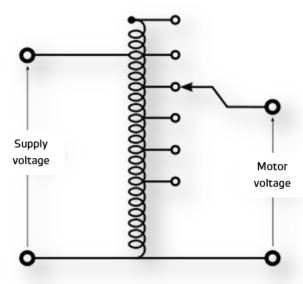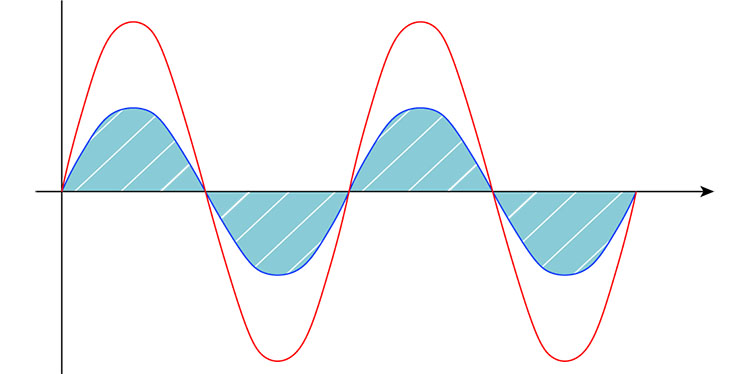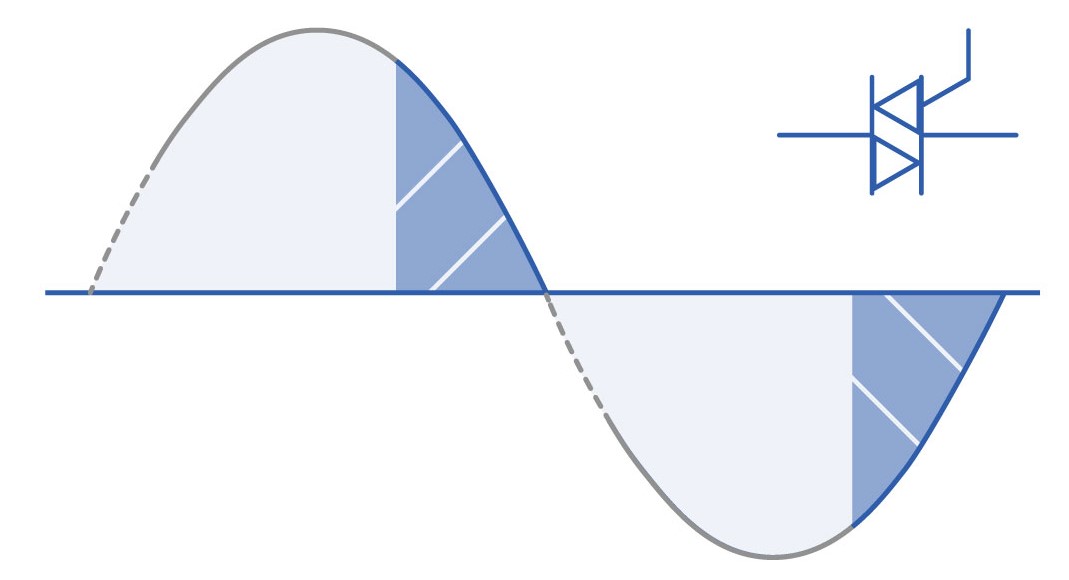What type of fan speed controller should I choose?
There are many different types of fan speed controllers available for AC motors. That doesn't make the choice any easier. We will briefly list the main advantages and disadvantages here. Some types of fan speed controllers regulate fan speed by reducing the motor voltage. The lower the motor voltage, the lower the fan speed. However, this is not possible with every type of AC motor. Verify with your fan manufacturer whether or not the motor is voltage controllable. If the motor is voltage controllable, you can control the fan with a transformer fan speed controller or with an electronic fan speed controller.
A transformer fan speed controller works with autotransformers. An autotransformer consists of a copper winding around a metal core.
 You will notice this when you pick up such a speed controller - they are quite heavy. Autotransformers usually offer 5 voltage taps. Each of these voltage taps supplies a reduced motor voltage. By connecting the motor to one of these voltage taps, the fan speed can be controlled in 5 steps. For this reason, most transformer fan speed controllers have a 5-position switch on the front panel. The advantage of a transformer fan speed controller or 5-step fan speed controller is the fact that the motor operates very quietly. However, the transformer controller itself may produce a soft humming noise. Transformer controllers are very easy to use. Once connected, they can be operated immediately. No configuration is required. This also means that minimum or maximum motor speed cannot be adjusted without rewiring. The only control option is to select one of the 5 available fan speed levels.
You will notice this when you pick up such a speed controller - they are quite heavy. Autotransformers usually offer 5 voltage taps. Each of these voltage taps supplies a reduced motor voltage. By connecting the motor to one of these voltage taps, the fan speed can be controlled in 5 steps. For this reason, most transformer fan speed controllers have a 5-position switch on the front panel. The advantage of a transformer fan speed controller or 5-step fan speed controller is the fact that the motor operates very quietly. However, the transformer controller itself may produce a soft humming noise. Transformer controllers are very easy to use. Once connected, they can be operated immediately. No configuration is required. This also means that minimum or maximum motor speed cannot be adjusted without rewiring. The only control option is to select one of the 5 available fan speed levels. 
An electronic speed controller or TRIAC controller uses TRIACs to reduce the motor voltage.
 A TRIAC can be seen as an electric switch that passes parts of the supplied voltage through to the motor. Fan speed is regulated by passing more or less voltage through to the motor. The advantage of an electronic speed controller is the fact that fan speed can be regulated continuous variably (not in steps). This provides additional flexibility to optimize airflow. A disadvantage is that the motor can produce some extra noise, especially at lower speeds. This is because pieces of the voltage are cut away. Especially at low speeds, the motor voltage will therefore no longer have a perfect sinusoidal shape, which may cause extra motor noises (depending on the type of motor). Also TRIAC controllers are easy to use. Once connected, they can be operated immediately. Usually the minimum and maximum motor speed can be adjusted via Modbus communication (adjust the Modbus Holding registers).
A TRIAC can be seen as an electric switch that passes parts of the supplied voltage through to the motor. Fan speed is regulated by passing more or less voltage through to the motor. The advantage of an electronic speed controller is the fact that fan speed can be regulated continuous variably (not in steps). This provides additional flexibility to optimize airflow. A disadvantage is that the motor can produce some extra noise, especially at lower speeds. This is because pieces of the voltage are cut away. Especially at low speeds, the motor voltage will therefore no longer have a perfect sinusoidal shape, which may cause extra motor noises (depending on the type of motor). Also TRIAC controllers are easy to use. Once connected, they can be operated immediately. Usually the minimum and maximum motor speed can be adjusted via Modbus communication (adjust the Modbus Holding registers). If the motor is not voltage controllable, a frequency inverter or Variable Speed Drive (VSD) is required to regulate fan speed. The frequency inverter will not only regulate the motor voltage, but also the frequency. Frequency inverters provide optimum motor control. They are also available for larger motor powers. However, the applied IGBT technology is expensive. Before you can operate a frequency inverter, it must be configured. During configuration, you define the motor parameters, the functionality of the in- and outputs, etc. Configuration is possible via the buttons on the front panel or via configuration software.
